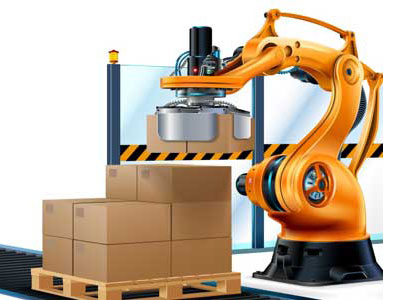Key Takeaway
Industrial robots can vary greatly in price. Basic models typically start at around $25,000, while more advanced models can exceed $100,000. The cost depends not only on the robot but also on additional components. These include the controller, teach pendant, software, and End-of-Arm Tooling (EOAT). Other factors like installation and maintenance can also add to the overall expense. For a precise estimate, it’s essential to consider all these elements.
Factors Affecting Cost
Several elements influence the cost of industrial robots. Firstly, the type and complexity of the robot play a significant role. Simple robots designed for repetitive tasks are generally cheaper than advanced robots with AI capabilities. Additionally, the brand and model can impact the price, as well as the robot’s payload capacity and reach.
Installation and integration costs are another major factor. Installing an industrial robot requires specialized expertise, and integrating it into existing systems can be complex and costly. Moreover, the level of customization needed to meet specific operational requirements can also drive up the cost.
Lastly, geographic location affects cost due to variations in labor rates and import duties. Overall, understanding these factors helps in budgeting for the total investment required for industrial robots.

Initial Purchase Price
When considering the initial purchase price of industrial robots, it’s essential to understand the wide cost range. Entry-level models, suitable for tasks like material handling or basic assembly, can start at $25,000. These models are ideal for small to medium-sized enterprises looking to automate straightforward processes without breaking the bank. On the higher end, advanced robots equipped with vision systems, AI, and greater flexibility can exceed $100,000. These high-end models are designed for complex applications, such as precision machining or intricate assembly tasks. The price typically includes essential peripherals like controllers, teach pendants, and safety systems.
While the initial cost might appear steep, it’s crucial to weigh this against the long-term benefits and savings from automation. Investing in a higher-priced robot may offer greater versatility and future-proofing, aligning with your specific operational needs and strategic goals. Therefore, a thorough analysis of the initial purchase price concerning your current requirements and future ambitions is vital for making a sound investment decision.
Maintenance and Operating Costs
Maintenance and operating costs are key components of the total cost of ownership for industrial robots. Regular maintenance is critical to ensuring optimal performance and extending the robot’s lifespan. This typically involves routine inspections, lubrication, part replacements, and software updates. Depending on the complexity and usage of the robot, annual maintenance costs can range from a few hundred to several thousand dollars. Operating costs include energy consumption, spare parts, and labor for maintenance. Robots with higher efficiency ratings tend to have lower energy costs, contributing to overall savings.
Additionally, training costs for operators and maintenance personnel should be considered as part of operating expenses. Proper training minimizes downtime and enhances productivity, leading to cost savings over time. It’s also worth noting that the availability and cost of spare parts can vary significantly between manufacturers and models, impacting long-term operating expenses. Thus, understanding and planning for these costs is crucial for budgeting and financial forecasting.
Cost-Benefit Analysis
Conducting a cost-benefit analysis is indispensable for evaluating the financial viability of investing in industrial robots. Start by estimating the total cost of ownership, encompassing initial purchase, installation, maintenance, and operating costs. Compare these expenses to potential benefits, such as increased production rates, improved quality, and reduced labor costs. A key metric to consider is the payback period, which measures the time it takes for the savings generated by the robot to cover its costs. A shorter payback period indicates a more attractive investment.
Beyond tangible benefits, factor in intangible advantages like enhanced safety, consistency, and the capacity to undertake more complex projects. These benefits can significantly impact overall operational efficiency and business growth. Therefore, a comprehensive cost-benefit analysis helps in making informed decisions, ensuring that the investment aligns with the strategic goals and delivers substantial returns.
ROI Considerations
Return on investment (ROI) is a critical metric in assessing the cost-effectiveness of industrial robots. To calculate ROI, compare the total benefits, including cost savings and productivity gains, against the total costs. A high ROI indicates that the investment is profitable. Factors influencing ROI include the robot’s utilization rate and efficiency. Higher utilization rates spread fixed costs over more production hours, enhancing ROI. Additionally, more efficient robots complete tasks faster and with greater accuracy, boosting productivity and reducing waste.
Scalability is another crucial aspect. Investing in modular robots that can be easily upgraded or repurposed for different tasks can enhance ROI by providing long-term flexibility and adaptability. This ensures that the robotic solution remains relevant and valuable as business needs evolve. Therefore, considering these factors helps in maximizing the financial returns from the investment, making it a worthwhile addition to your automation strategy.
Conclusion
The cost of industrial robots varies widely based on factors like size, complexity, and functionality. Generally, smaller robotic arms can start around $20,000, while larger, more specialized units can exceed $100,000. Additional costs include installation, programming, and maintenance, contributing to the overall investment. Understanding these costs is crucial for businesses considering automation to optimize production efficiency and ROI.
